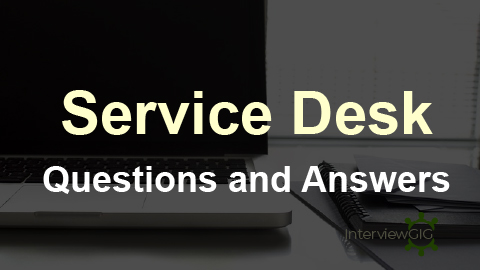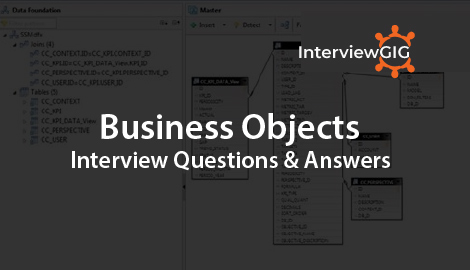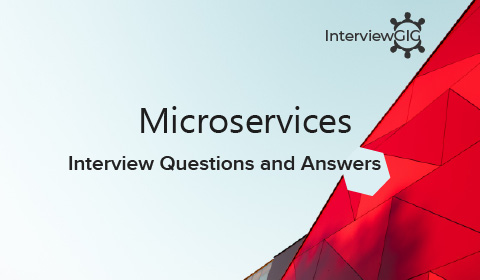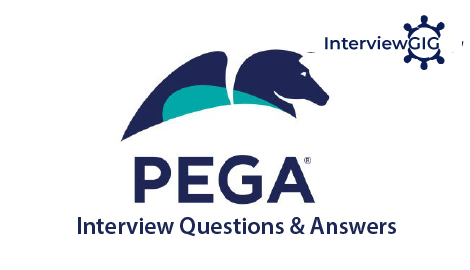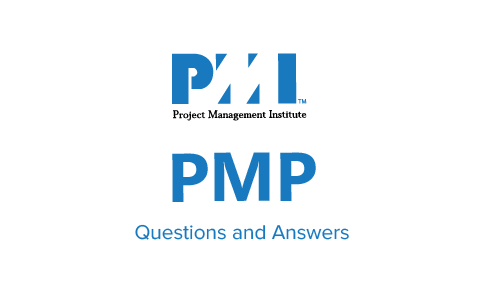What is ITIL?
ITIL stands for Information Technology Infrastructure Library. It is a Framework. It is one of the most preferred & utilized IT Service Management (ITSM) framework. ITIL provides guidance to an organization and individuals to use IT as a service to empower business change, transformation & improvement.
What is ITSM?
ITSM stands for IT service management. It is the process of designing, delivering, managing, and improving the IT services an organization provides to its end users. ITSM is focused on aligning IT processes and services with business objectives to help an organization grow.
What is SLA?
SLA stands for service level agreement. It is a contract between a service provider (either internal or external) and the end user that defines the level of service expected from the service provider.
What are the 5 ITIL service lifecycles (ITILv3)?
- Service Strategy
- Service Design
- Service Transition
- Service Operation
- Continual Service Improvement
Which processes are utilized by the Service Desk?
Workflow and procedures diagrams
What are benefits of ITIL framework?
- Improved customer satisfaction and a higher quality of delivery of services
- Improved return on Investment (ROI) of IT
- Improves the customer satisfaction
- Implements best practices to enhance IT services
- Reduced costs by implementing improved utilization of resources
- It helps to boost the delivery services.
- Improves the relationship and interaction between the service providers and their customers.
- Boosts the coordination between the delivery of products and services, and also be able to optimize the total cost.
- Enables the business to manage business changes more efficiently.
- leads to better asset utilization & management.
- It helps to measure the performance of IT services.
- Better management of business risk and service disruption
What are the main processes in Service Strategy in ITILv3?
- Strategy Management for IT Services
- Service Portfolio Management
- Financial Management for IT Services
- Demand Management
- Business Relationship Management
What are the main processes in ITILv3service design?
- Design Coordination
- Service Catalogue Management
- Service Level Management
- Capacity Management
- Availability Management
- IT Service Continuity Management
- Information Security Management
- Supplier Management
- Risk Management
- Compliance Management
- Architecture Management
What are the main processes in ITILv3 Service Transition?
- Transition Planning and Support (Project Management)
- Change Management
- Change Evaluation
- Service Asset and Configuration Management
- Release and Deployment Management
- Service Validation and Testing
- Knowledge Management
What are the main processes in ITILv3 Service Operation?
- Event Management
- Incident Management
- Request Fulfilment
- Problem Management
- Access Management
- Service Desk (Function)
- Technical Management (Function)
- IT Operations Management (Function)
- IT Operations Control (Sub-Function)
- Facilities Management (Sub-Function)
- Application Management (Function)
What are the main processes in ITILv3 Continual Service Improvement?
- Service Review
- Process Evaluation
- Definition of CSI Initiatives
- Monitoring of CSI Initiatives
List the 4 P's of Service Design Stage in ITILv3?
- People
- Products
- Partners
- Processes
What are the ITIL Models Adopted by an Organization?
The models are:
- Microsoft MOF (Microsoft Operations Framework)
- Hewlett-Packard (HP ITSM Reference Model)
- IBM (IT Process Model)
What is the ITIL SKMS?
SKMS stands for Service Knowledge Management System in ITIL V3, is the central repository of the data, information, and knowledge that the IT organization requires, to manage the lifecycle of its services. The main purpose of ITIL SKMS is to store, analyse, and present the service provider’s data, information, and knowledge in a structured manner.
What is the ITIL Incident Management Process?
The Incident Management Process is one of the most important processes of the ITIL Service Operation stage of the ITIL lifecycle. The Incident Management Process is the process that deals with managing service problems that may cause a deficit in service quality and subsequently a drop in customer satisfaction.
Can you Explain a Known Error?
A Known Error refers to an identified problem that has an acknowledged root cause and a solution. It consists of the following:
- Status
- Error Description
- Root Cause
- Workaround
What are the 7Rs of Change Management
- Who RAISED the change request?
- What is The REASON behind the change?
- What RETURN required from the change?
- What RISKS involved in the requested change?
- How many RESOURCES required to deliver the change?
- Who is RESPONSIBLE for the create, test and implement the change?
- What is the RELATIONSHIP between suggested change and other changes?
What are the work-around recovery options?
- Recovery options are commonly classified as:
- Manual workaround
- Reciprocal arrangements
- Gradual recovery
- Intermediate recovery
- Fast recovery
- Immediate recovery
Can you explain RACI model?
RACI stands for the following:
Responsible: Responsibility assigned to a particular person the complete the task.
Accountable: Person held accountable for the given task.
Consulted: People or groups who are consulted for the task.
Informed: People who are kept informed about the progress of the on-going task.
What is PDCA?
PDCA stands for Plan Do Check Act. It is also called Deming’s cycle or Shewhart cycle. The PDCA cycle is used in many industries and areas in business for controlling and measuring results and then acting based on the results to produce a better output in later steps or trials.
Plan: Planning the Improvements. Measures for success are agreed. Gap analysis is undertaken and a plan produced to close the gap through a series of step improvements.
Do: Implementation of Improvements. A project is instigated and conducted to implementation to close the gaps identified in the Plan phase. The project may include a number of step changes to improve a service or process.
Check: Monitoring, Measuring and Reviewing. The results of the implemented improvements are compared with the measures for success identified and ratified in the Plan phase.
Act: Improvements implemented. The improvements that have been identified are fully implemented.
What is the CAB?
CAB is a cross-functional group set up to evaluate change requests for business need, priority, cost/benefit, and potential impacts to other systems or processes. Typically, the CAB makes recommendations for implementation, further analysis, deferment, or cancellation.
What’s the difference between an End-user and a Customer?
An end-user (or end customer) is the direct recipient of the service, or uses the product. A customer may or may not be able to choose between different products or suppliers. An example of the latter would be things like court-appointed attorneys, or a monopoly situation such as an Internet or cable provider.
Can you define freeze period?
Freeze period: It is a point in time in the development process after which the rules for making changes to the source code or related resources become stricter, or the period during which those rules are applied.
Can you explain ISO/IEC 27002?
ISO/IEC 27002:2013 is a code of practice that gives guidelines for organizational information security standards and information security management practices. This code includes the selection, implementation, and management of controls while taking into consideration an organization’s information security risk environment. The code recommends information security controls that address information security control objectives that come from risks to the confidentiality, integrity, and availability of information.
Can you explain balanced scorecard?
A balanced scorecard is a strategic planning and management system that is used extensively in business, government, and non-profit organizations worldwide to align business activities to the vision and strategy of an organization, improve internal and external communications, and monitor the organization’s performance against its strategic goals.
Can You define service portfolio,service catalogue,service pipeline
a) Service Portfolio: It defines services provided by service providers across the market and all customers. The objective of ITIL Service Portfolio Management is to manage the Service Portfolio. Service Portfolio Management ensures that the service provider has the right mix of services to meet the required business outcomes at an appropriate level of investment.
b) Service Catalogue: It is a subset of Service Portfolio. Services ready to be offered to customers are listed in this catalog. An IT Service Catalog is a list of available technology resources and offerings within an organization.
c) Service Pipeline: It’s consists of services under development. It is a great opportunity to view the direction of a service provider’s growth as it discusses and includes the future services that are currently under development by the service provider.
What are the different types of SLAs
Customer-based SLA: It is used for individual customers and comprises all relevant services that a client may need, while leveraging only one contract. It contains details regarding the type and quality of service that has been agreed upon.
Service-based SLA: It is a contract that includes one identical type of service for all of its customers. Because the service is limited to one unchanging standard, it is more straightforward and convenient for vendors.
Multi-level SLA: It is customized according to the needs of the end-user company. It allows the user to integrate several conditions into the same system to create a more suitable service.
Which ITIL process should ensure that the organization is aware of new and changing technologies?
Capacity Management is responsible for ensuring that the organization is aware of new and changing technologies. It is the discipline that checks and verifies that IT infrastructure is provided at the right time in the right volume at the right price, with utmost efficiency.
What are the key components of a service-level agreement?
The type of service
- The required performance levels
- Monitoring and reporting
- Complaints processes
- Issue resolution process
- Repercussions for poor service
What is OLA?
OLA stands for Operational Level Agreement. This is the agreement between functional groups or teams within an organization. This agreement supports the delivery of the overall SLA to the customer.
What is DML?
DML stands for Definitive Media Library. Itis a secure location where the definitive, authorized versions of software package configuration items (CIs) are stored and kept safe. A DML is made up of one or more software libraries or file-storage areas known as repositories.
What is PIR?
PIR stands for Post Implementation. Review refers to the evaluation and analysis of the entire working process and solution. It is usually performed after the change request is put into effect to determine if the change and its implementation were successful.
What is Availability Management?
AM ensures that IT services meet agreed availability goals. It also ensures new or changed service meet availability goals and doesn’t affect the existing services.
What type of information is stored in a CMDB?
CMDB contains contents that are intended to hold a collection of IT assets commonly referred to as configuration items (CI) as well as descriptive relationships between such assets.
What is difference between Expedite / Urgent Change and Emergency Change?
An ITIL emergency change is the highest priority change that can be defined in an organization. An expedited change is a change that meets a critical business requirement without the normal review and approval time.
Which two service management processes will most likely use risk analysis and management methodology?
Availability Management and IT Service Continuity Management.
What is Knowledge management?
Knowledge management is a discipline that promotes an integrated approach to identifying, capturing, evaluating, retrieving, and sharing all of an enterprise’s information assets. These assets may include databases, documents, policies, procedures, and previously un-captured expertise and experience in individual workers.
What are the benefits of ITIL Knowledge Management?
- Increase business volume without hiring more employees
- Increase quality of service
- Reduce loss of intellectual capital when employees change
- Avoid redundancies in problem solving by democratizing information
- Minimize frequency and impact of legal or regulatory action
- Reduce time to market
- Enable employee development and increase worker satisfaction
- Avoid redundancies in problem solving by democratizing information
- increased worker productivity with more available knowledge
What are the Stages of Knowledge Management?
- Data
- Knowledge
- Information
- Wisdom
What are the different knowledge management systems?
- CMIS – Capacity Management Information System
- SKMS – Service Knowledge Management System
- AMIS – Availability Management Information System
- CMDB – Configuration Management Database
- DML – Definitive Media Library
- KEDB – Known Error Database
Can you explain Change management?
Change management process has 5 sequential activities which can be mentioned as registration and categorization, risk and impact analysis, approval, coordinate change build and test, authorize change deployment, and finally review and close change record.
Can you explain Change evaluation?
Change evaluation process has 3 sequential activities which can be mentioned as plan evaluation, evaluation of predicted performance, and finally evaluating actual performance.
What are the key Service Value Chain (VC)s in ITILv4?
- Plan
- Improve
- Engage
- Design and Transition
- Obtain/Build
- Deliver and Support
What are the New 4 Dimensions of Service Management in IILv4?
- Organization and People
- Value Streams and Processes
- Partners and Suppliers
- Information and Technology
What are the New seven ITIL 4 guiding principles?
- Focus on value
- Start where you are
- Progress iteratively with feedback
- Collaborate and promote visibility
- Think and work holistically
- Keep it simple and practical
- Optimize and automate.
What are the New 34 Practises in ITILv4?
It is split into three management Practices
General management practices
- Architecture management
- Continual improvement
- Information security management
- Knowledge management
- Measurement and reporting
- Organizational change management
- Portfolio management
- Project management
- Relationship management
- Risk management
- Service financial management
- Strategy management
- Supplier management
- Workforce and talent management
Service management practices
- Availability management
- Business analysis
- Capacity and performance management
- Change control
- Incident management
- IT asset management
- Monitoring and event management
- Problem management
- Release management
- Service catalogue management
- Service configuration management
- Service continuity management
- Service design
- Service desk
- Service level management
- Service request management
- Service validation and testing
Technical management practices
- Deployment management
- Infrastructure and platform management
- Software development and management

